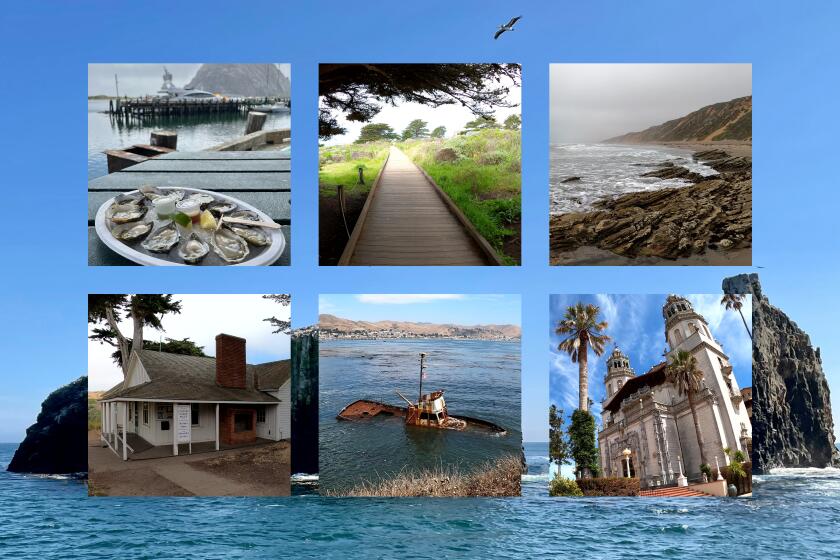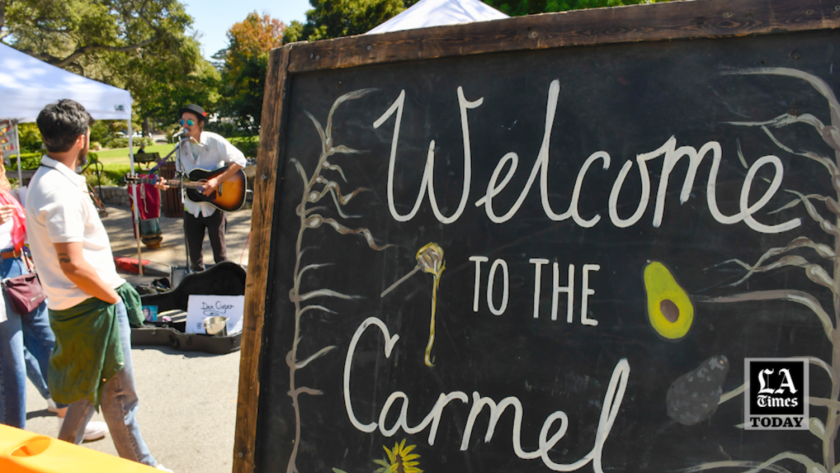How to get the best of gorgeous, pricey, artsy Carmel
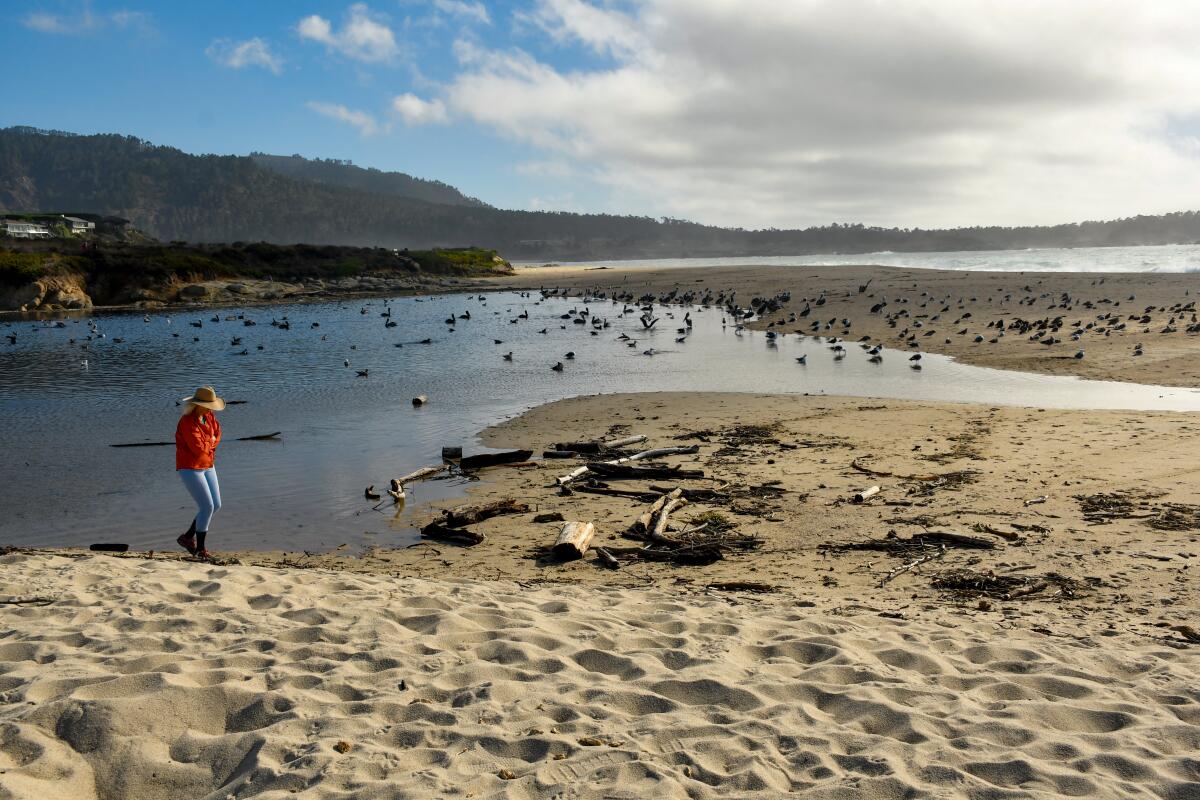
- Share via
In Big Sur, land meets sea in the most amazing ways. Meanwhile just up the road in Carmel, nature meets art, cars, charm, golf and money.
It’s hard to look away. And once you get there, hard to leave. At least that’s how it seemed a few weeks ago when my wife and I dropped in.
Neither of us had seen Carmel for awhile, and I’m guessing that’s true for many in Southern California, especially since last winter’s storms forced the indefinite closure of Highway 1 in Big Sur near Lucia.
But Highway 1 was always the slow way from L.A. to Carmel. The faster way hasn’t changed: Spend 5 1/2 hours racing up I-5 and U.S. 101 and, boom, here you are in a remote civilization of rocky coastline, immaculate cottages, Dutch doors, coddled dogs with unleashed beach access, a shoreline full of wind-bent cypresses and (is this the most outlandish thing?) up to two hours of free street parking.
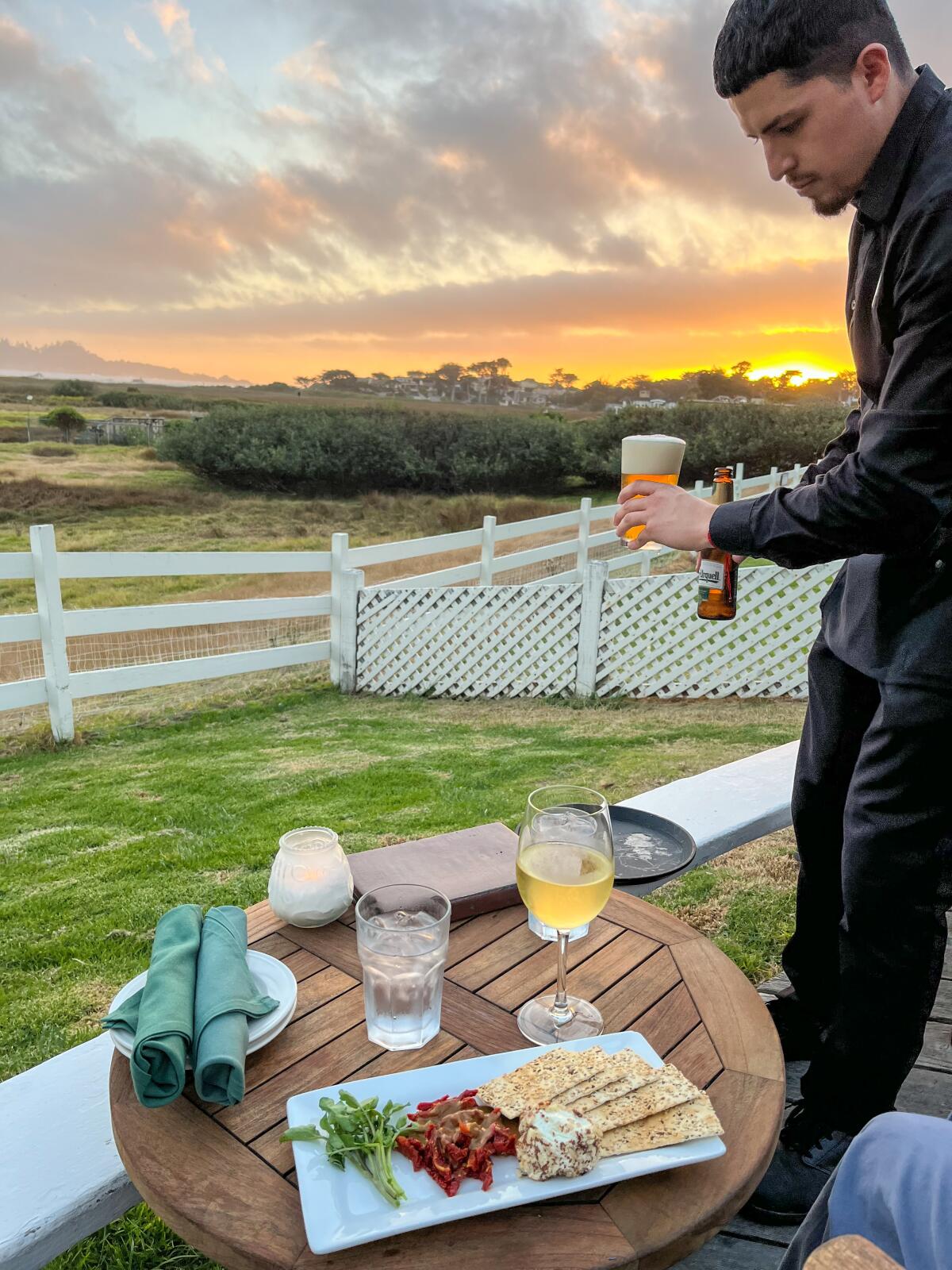
We arrived on a sunny fall day. The summer crowds had gone, but there were plenty of well-heeled visitors on hand, browsing the boutiques of Ocean Avenue.
In fact, as we walked, we gradually realized that thousands of Porsche drivers were converging for a convention, one of many luxury-car events the area hosts every year. At every parking lot and intersection, Boxsters, Cayennes and Spyders of every vintage and hue were multiplying like intricately engineered bunnies in spring.
“Hey,” said one wiseacre, stepping into a gaggle of car people on the patio at the Mission Ranch. “Is this the Ford Fiesta group?”

Even for a pair of Angelenos who have seen plenty of outlandish landscapes and economic extremity, the beauty-and-wealth situation was striking. This makes choosing a restaurant or lodging tricky. But the quality is high. And you don’t have to be wealthy to enjoy a lot of Carmel.
In fact, it might be easier to slip into eco-rapture over the waves and birds and sand and driftwood at Carmel River State Beach if you’re on foot or pedaling along on two wheels. And you’ll definitely need to leave most possessions at home in order to hike the 2.2 miles up to Inspiration Point in Palo Corona Regional Park.
You can check out the artists and their easels down on the beach at the foot of Ocean Avenue — or ignore the artists and enjoy the sand, surf and cypress trees twisting in the breeze.
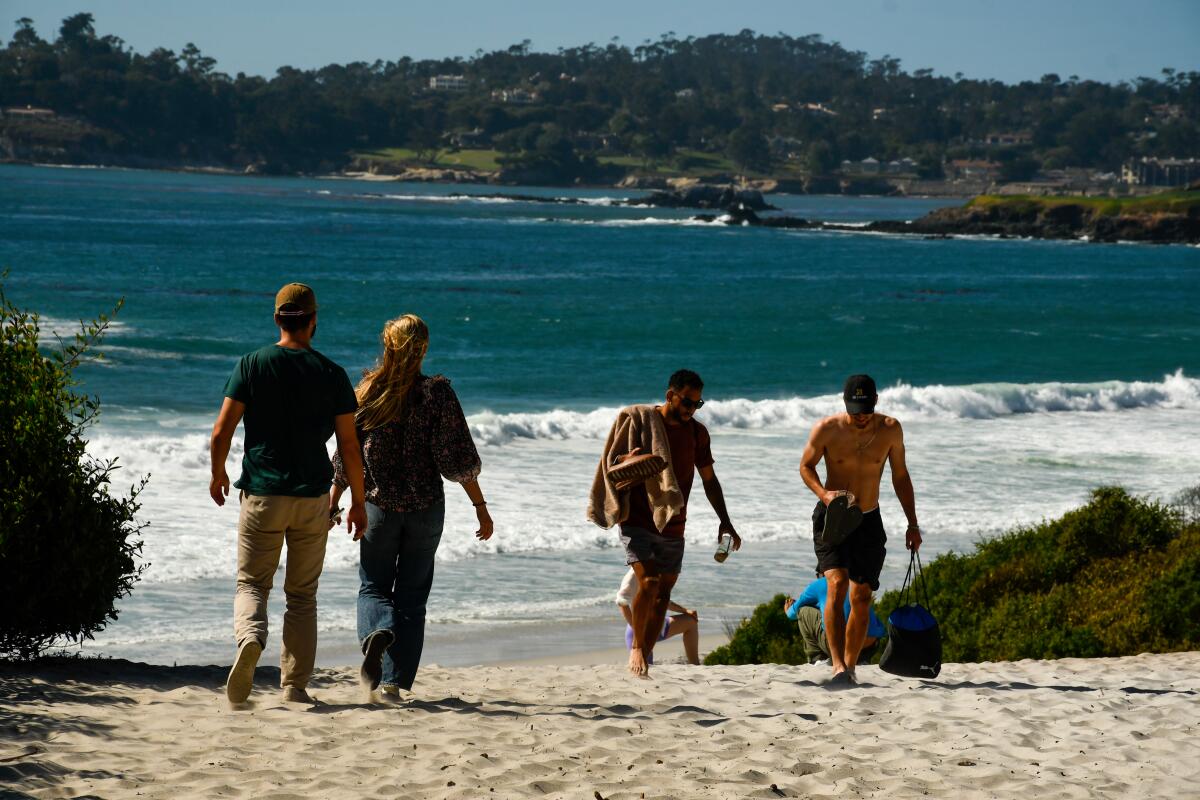
If you’re around on a Thursday between 10 a.m and 2 p.m., you can grab berries or hummus or cheese or dumplings and hear a street musician at the two-block Carmel-by-the-Sea Farmers Market on 6th Avenue between Junipero and Mission streets.
If you’re around any weekday, you can step into Harrison Memorial Library on Ocean Avenue, admire architect Bernard Maybeck’s 1928 Spanish Eclectic design, then pitch in on a puzzle. There’s always one in progress in the reading room, open to all comers, and on chilly days, the librarians light the fireplace. (But on weekends, the building is shut up tight.)
Instead of spending $350 per night for a hotel room, which is easy to do, we booked a “glamping” tent at the recently revamped Carmel River Inn for $226 per night. When we saw the ragged state of the inn’s office, we were tempted to run away, but once we reached our tent — one of several introduced this year — it had electricity, a king bed, a big screen, a half-kitchen and its own ample, solid-walled bathroom, all a few minutes’ drive from the heart of town. Thumbs up, especially if you get warm weather.
Short hikes, state parks, historical sites and seafood joints await as you make your way between Ventura and San Simeon.
If we were going to sleep a little fancier, I might have headed into the village to book Le Petit Pali at 8th Avenue, which opened in June. Instead, I took time to tour its 24 elegant, low-key rooms and suites, which start at roughly $350 on fall weekends. (Its sibling, the 34-room Le Petit Pali at Ocean Avenue a few blocks away, is also pleasant, but the 8th Avenue lodging is on a quieter street with a bigger patio.)
And here’s a footnote for big spenders: If we were going to truly splurge on lodging, then I’d have booked us the Villa Mara Carmel, which looks like a single home in the mostly residential Carmel Point area. Look closer and you find that it’s actually a luxe lodging. It accepts ages 21 and older, with 15 rooms and a cottage, but no pool. It opened in 2022. Its nightly rates for fall weekends rarely fall below $600. A Conde´ Nast Traveler reviewer called it “the quintessential Northern California bougie barefoot experience.”
Carmel hasn’t always been this rich, but it has always been this pretty and artsy.

“Carmel is not so much an art colony as it is a work of art,” historian Carey McWilliams wrote in 1930. He called the landscape lovely, startling and unforgettable. And then, as you can read in David Kipen’s just-published collection of diary entries and letters, “Dear California,” McWilliams warned that Los Angeles Realtors would be coming soon to ruin everything.
“Carmel has become a splendid experience in the lives of many western artists,” McWilliams wrote, “and they will view its desecration with unspeakable horror.”
So welcome, I suppose, to the quaintest desecration you’ll ever see.
Officially called Carmel-by-the-Sea, the city measures about 1 square mile — a village, really. Most homes and businesses are wedged onto tiny lots, the buildings often designed with fairy-tale flourishes, as if commissioned by hobbits with trust funds.
Despite a modest population of about 3,800, Carmel harbors about 60 restaurants, about 40 hotels and inns, dozens of galleries and 18 tasting rooms.

There are no address numbers within city limits (because it’s custom for locals to collect mail at the post office) and many homeowners have given their houses names, like yachts on land. Short-term rentals are banned (though they’re permitted in neighboring areas).
The town was born in the late 19th century as a woodsy haven for bohemian types. Their headliner for many years was poet Robinson Jeffers, who built a stone home near Carmel Point, Tor House, that you can tour on Saturdays.
Photographers Edward Weston and Ansel Adams came later, as have many painters, sculptors, poets, architects and actors — including a few who are best known for work done elsewhere.
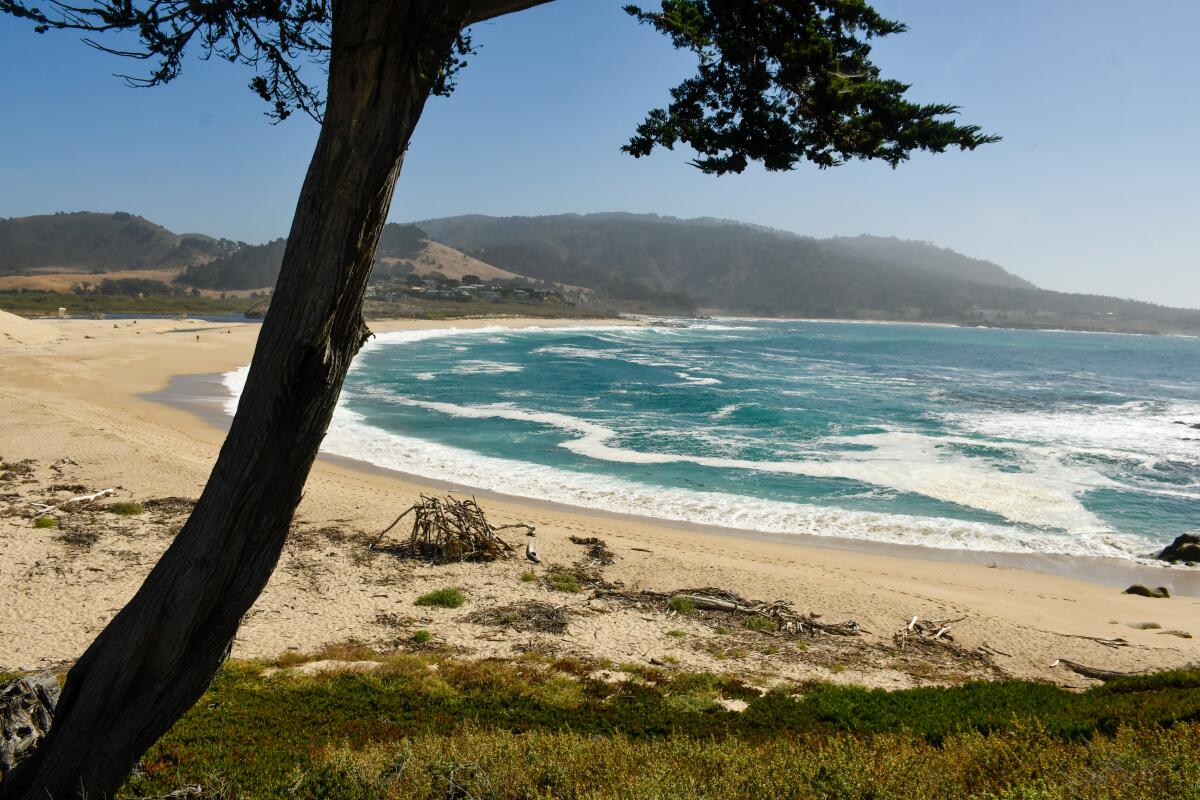
The city has never had a reputation for diversity (and remains 90% white), but the Black poet Langston Hughes did spend a year in town during the early 1930s. Then he published a story collection called “The Ways of White Folk.”
Though I always thought of Greene & Greene architects as Pasadena people (and pioneers of the Craftsman bungalow), I learned better on this trip. The elder brother, Charles Sumner Greene, eventually bailed out of Pasadena and spent more than 30 years working and living in Carmel.
He built one of his masterpieces in Carmel Highlands — a clifftop, stone-walled home called Seaward — and put together a humbler place for himself on Lincoln Street, using recycled bricks and tiles from other projects.
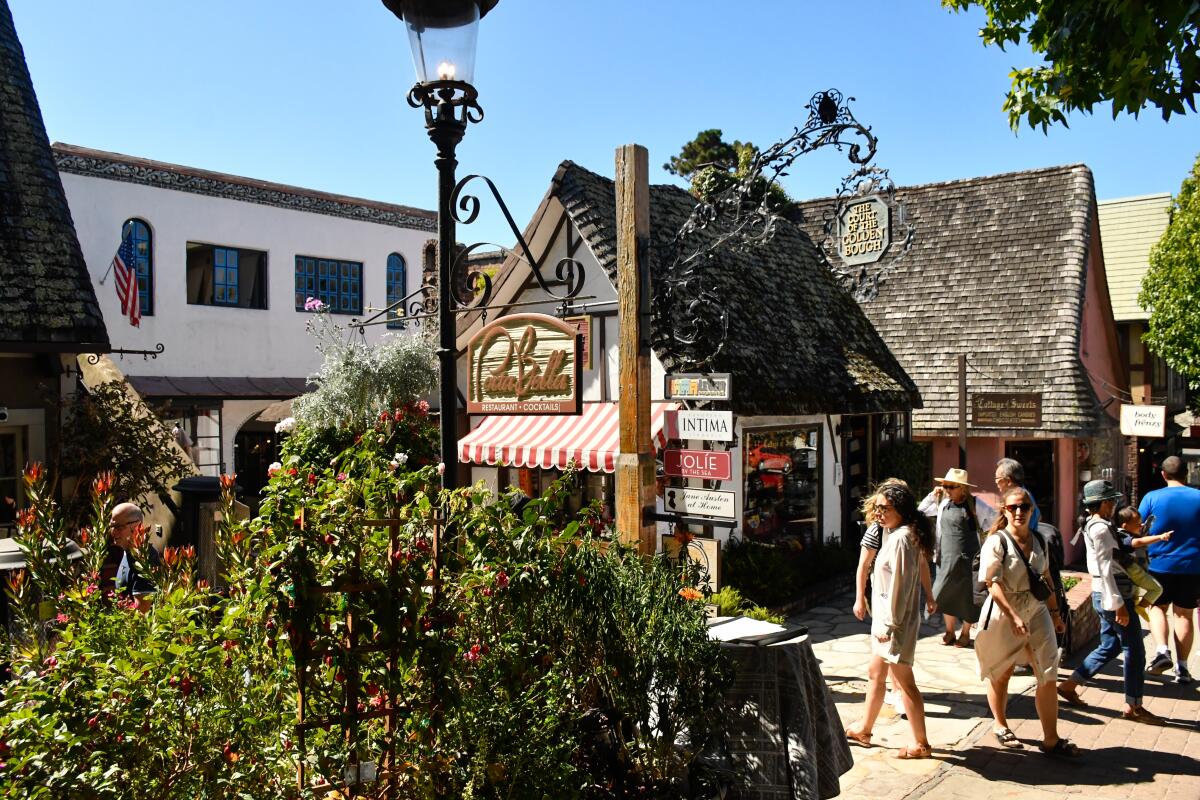
Clint Eastwood, who did a brief stint as mayor in the 1980s and used to own the Hog’s Breath Inn, still lives here and owns the Mission Ranch Hotel and Restaurant. We had a round of pre-dinner drinks there, gazed upon the sheep and caught a brilliant sunset across the meadow.
The closer you look, the more Hollywood names you see. Betty White had a place on Ribera Road until her death in 2021. Doris Day, a co-owner of Carmel’s Cypress Inn for many years, died at her Carmel Ranch home in 2019.
Oh, and Brad Pitt last year bought an architectural landmark in the Carmel Highlands that he’d been eyeing for years: Charles Sumner Greene’s clifftop, stone-walled Seaward house. Sale price: $40 million.
We had splendid lunches at La Bicyclette (European country cuisine and a wood-burning pizza oven) and Anton & Michel (modern European menu with a pleasant courtyard), both of which have been in town for years.
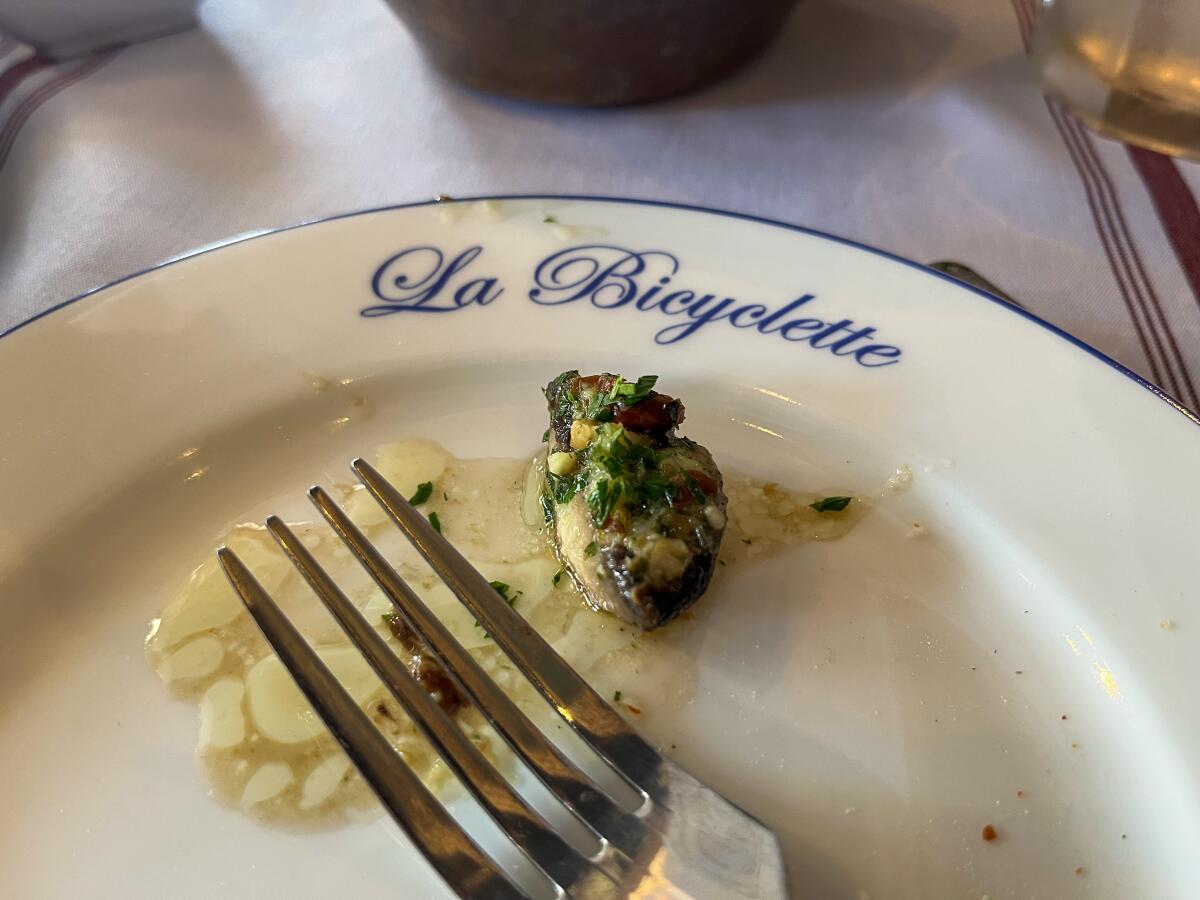
Our most memorable meal was a tremendous splurge dinner on the patio of the Pocket, which opened during some of the worst days of the pandemic — the summer of 2020 — and prospered anyway, offering steak, seafood and Italian fare. We sat outside by a fire pit.
The one gallery in town that I’d call mandatory is the spacious Carmel Art Assn., a nonprofit entity that shows the work of more than 100 local artists, keeping standards high. The association, which goes back to 1927, came through the pandemic remarkably well.
“We didn’t find a decline in sales here,” said the gallery’s sales, design and marketing associate Grace Aniela Wodecki. “We hypothesize that a lot of people who don’t usually spend a lot of time in their second homes were spending more time in their second homes” — and redecorating.
- Share via
Watch L.A. Times Today at 7 p.m. on Spectrum News 1 on Channel 1 or live stream on the Spectrum News App. Palos Verdes Peninsula and Orange County viewers can watch on Cox Systems on channel 99.
More to Read
Sign up for The Wild
We’ll help you find the best places to hike, bike and run, as well as the perfect silent spots for meditation and yoga.
You may occasionally receive promotional content from the Los Angeles Times.
